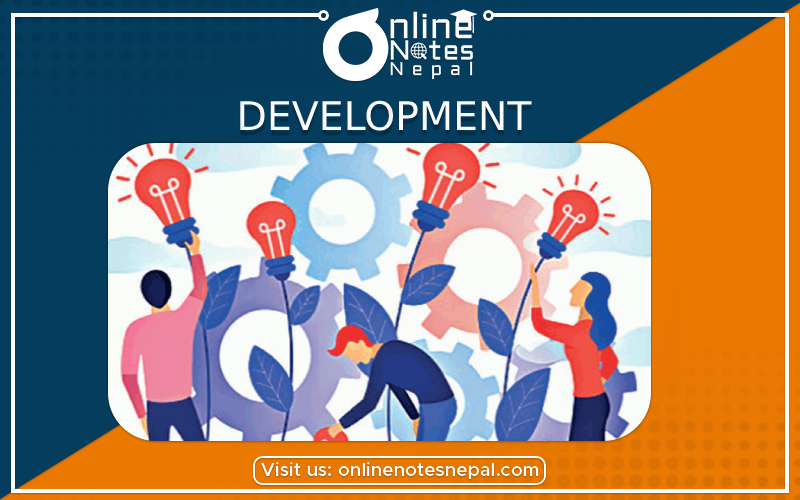Published by: Mandira
Published date: 13 Jan 2022

The people, families, communities, and country are always changing. Development is a change which brings improvement in the lives of every human being. The change that benefits only men or city dwellers does not represent development. Thus, a true development benefits all the people and has the capacity to run smoothly for a long time.
The level of development is not equal everywhere. Some countries such as those in Western Europe have been developing rapidly for 200 years. These countries are now considered as developed countries. Although there are poor people, most people enjoy the high standard of living. Other countries, mainly Africa, Asia and South America have only been developing for about 50 years and for historical or geographical reasons these developing nations are much poorer. In these countries average living standard of people is low.
Achieving Development
Development is often connected with economic growth. In this sense, to obtain higher economic status is development. But economic growth alone does not represent true development. In other words, development is concerned not merely with the fulfillment of physical needs of people but also with socio-cultural amelioration. So, true development refers to the changes that improve the overall human condition.
Development takes place with the proper utilization of available means and resources. Factors such as health, education, transport and communication are essentials for providing services for people and to run developmental activities. So these are called infrastructures of development. A country with good systems of these factors can run development easily. Development is a change which brings improvement in the lives of everyone living in the country. Above all good leadership and its execution cannot be expected from corrupt leaders.
The economy of a country is stronger if it has more export and less import. Money earned from exports, goods sold abroad and is lost by buying imports from other countries. Though Nepal loses a lot in its imports, it has been earning well from foreign employment. In many parts of the world, the fruit of development is not equally enjoyed by all the people. There is a huge gulf between rich and poor in capitalist societies. So, countries should make an effort to achieve development that can benefit the poor societies more.
Measuring Development
The level of development can be measured and compared with the help of several figures known as indicators. Gross domestic product (GDP), a common indicator, is the total value of goods produced and services provided within a country's border irrespective of nationalities of the producers or providers. GDP, thus, includes the contribution by the non-nationals within the country but executes that by the nationals abroad. Nowadays gross national income (GNI) is used as the main indicator of economic development. GNI includes both GDP and earning from abroad. If we divide it by total population, we have the per capita income, which is the average amount earned by the people in one year. Per capita income is a common indicator of development. It shows the average income status of citizens in a year time.
Mathematically, per capita income= GNI/total population
Total population
The distribution of jobs is another indicator. In poor countries, people work hard mainly in non-industrial fields, but without skills, power or machinery, they cannot earn very much. Human Development Index (HDI) is a collective indicator calculated on the basis of per capita income, literacy and life expectancy. So, it can reflect the overall status of development achieved by a country in the areas of economic growth, education, and health. But average values always hide differences. For example, a country with many poor people may have high per capita income because of the high incomes of some very rich people. Per-capita income is same for rich and poor and for earnings and non-earning.
Means and resources
| Raw materials | Farming, forest products and natural resources |
| Labour-power | Skilled and unskilled manpower |
| Capital | Different kinds of tax, investment, trade and industry. |
| Power-sources | Hydroelectric, coal, gas, oil, solar power and wood |
| Transport | Roads, bridges, airways and other regular services |
| Communication | Television, radio, satellite, fax, postal services, email, telephone, etc. |
| Education | School, technical education, universities, campuses, skill-training etc. |
| Health, sanitation and family planning | Healthy and planned family, controlled population, hospital, environment conservation and waste disposal etc. |
| Power | Hydroelectricity, gas and oil supply, nuclear energy, thermal power, solar power and fuel etc. |
| Market | Local, national and international market |
| Commerce | Banking system, insurance, shops and hotels etc. |
| Irrigation | Canals, tube wells, pumps etc. |
| Housing, leisure facilities | Planned development, government provision. |
We have abundant sources of minerals,perennial rivers,thrilling cultures,peculiar flora and fauna etc but they are not utilized properly.The reasons are:-